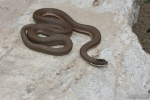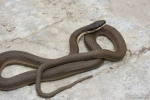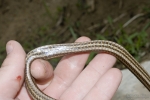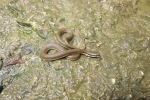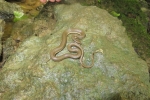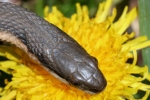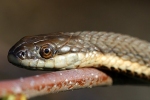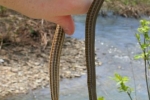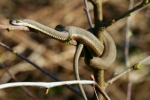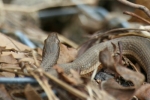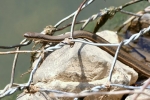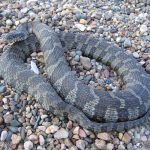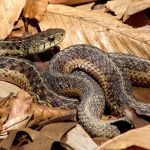Queensnake
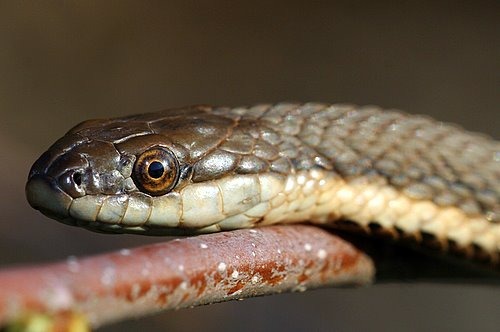
Scientific Name: Regina septemvittata
Size: 14-23 in. (35.5-58.4 cm) in length
Status: Species of special concern
Habitat:
Slow to fast flowing “clean” streams, creeks, rivers, small lakes, ponds with a good source of crayfish. May be found around or under loose rocks, retainer walls, vegetation, or on small trees, shrubs, and logs.
Description:
A medium sized tan, greenish or chocolate brown snake with a yellow stripe on lower side of the body. The belly is yellow with 4 distinct brown stripes. Scales are keeled and has a divided anal plate. It's almost always found in or near fresh water streams that also have crayfish, it's principle food.
- The dorsal is olive-brown to brown.
- The dorsal has a yellow stripe on each side the body along with 3 dark dorsal stripes.
- The dorsal stripes run along the 5th and 6th scale row with the 3rd one running along the spine.
- The ventral background is white to yellow with 4 dark stripes.
- The head is dark brown.
- The labials, chin and throat are white to light yellow.
- Slender, medium-sized species.
- Narrow head
- Dorsal scales are keeled.
- Thick head and chin scales.
- Similar to adults.
- Stronger dorsal stripes.
- 19 scale rows at midbody and anterior
- 17 scale rows at posterior
- 118-159 ventral scales
- 47-89 subcaudals | 2 rows of subcaudals
- 1 to 2 nasal scales
- 1 loreal scale
- 2 preocular scales
- 2 postocular scales
- 1+2-3+2-4 temporal scales
- 7 supralabials
- 9-10 infralabials
- Anal plate is divided


References:
- Hulse, C. and McCoy C. J. and Ellen Censky ,1998. Amphibians and Reptiles of Pennsylvania and the Northeast. 316-319pp.
- Ernst, Carl H. and Ernst, Evelyn M. ,2003. Snakes of the United States and Canada. 294-298pp.
- Jason Poston
- Bob Ferguson
- John White
- Don Becker(psychoticnature.com)
Heads up!
Please contribute your observation of this and other herps to the Pennsylvania Amphibian and Reptile Survey. Your help is needed.
